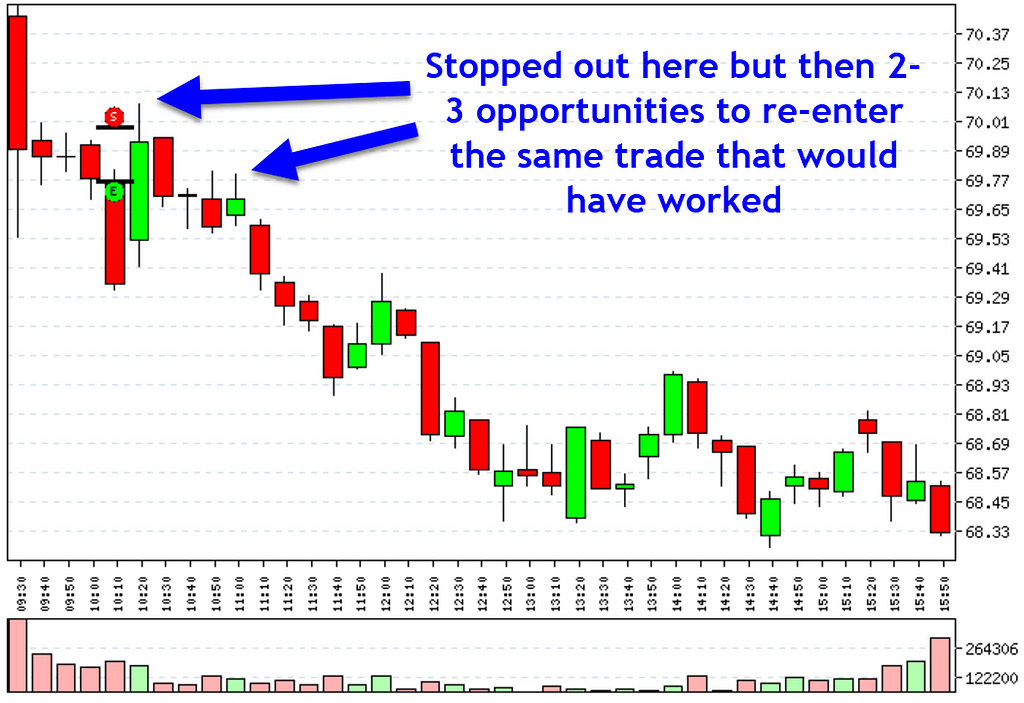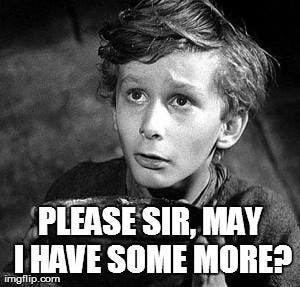Here’s a difficult trading situation that often confounds new traders or even experienced ones that are experiencing a drawdown: a trade setup occurs, you take the trade according to plan and it quickly hits your stop — but then it immediately sets up again for the same type of trade.
Do you take that second setup? On one hand a setup is a setup and not taking the trade would be a mistake. Though on the other hand the market has already told you you were wrong once — being told you’re wrong twice or three times just seems stupid.
Here are a couple methods you can use to increase your confidence level in this common situation. A large fraction of your trading confidence will come from your research outside of market hours and this situation is no different.
Keep Track of These Situations To Evaluate the Big Picture
As opportunities for re-entering trades occur it’s important to keep track of them to understand what happens over a large number of occurrences. Any individual trade is unimportant — it’s the aggregate that matters.
If you’re having difficulty with this situation you probably are taking some of these re-entry trades and skipping others. That’s understandable but to really gain confidence in these you’ll need to keep track of every one of them. If you’re only trading some then your sample is incomplete and your mind will play tricks on you by easily recalling the big winners or losers but forgetting the bulk of the instances. This is common and why keeping track of all your trades is so important. Your psyche will lie to you but the numbers won’t.
I suggest trading these subsequent setups but with really small size. This allows you to risk a small amount of money so the trade is real rather than theoretical which gives you skin in the game so you’re more likely to pay attention over time. As you trade these re-entries, it’s important to track them separately from the “normal” setup. Tagging your trades in a trading journal is a perfect way to handle these. The re-entries are a subset of the main strategy that these trades come from. For example, use a tag like “Strategy X” for all trades from this strategy whether they’re re-entries or not. For the re-entry trades, use an additional tag “ReEntry”. This allows you to track trades across the entire strategy but also filter on only the re-entry trades to measure their performance separately.
After I accumulated several trades using this method, I realized that the re-entry trades were actually performing better than the system overall. It absolutely made sense to trade these second chance setups — perhaps even with larger size.
Backtest to Get the Longer Term Picture
It takes time to wait to accumulate a lot of real-time trades to keep track of. You should absolutely do that but in the meantime you can do a backtest to understand what happened in similar situations before you started keeping track.
One approach to capture this situation is to have your backtest skip the first N opportunities in your strategy and trade the N+1th one. Of course, there will be fewer trades in the trade set since a lot of times there’s only a single setup, but you should be able to gather a lot of past instances of these re-entry trades to examine closely in a chart. You can start with N=1 and then run another with N=2, etc.
Every strategy is different but these two steps should give you a deeper understanding of your trading strategy overall but also give you confidence to trade the re-entries (or not!) knowing you have data to back you up.
If you liked this post, you’ll love my free newsletter where I teach how to come up with your own profitable trading strategies. Sign up here ->


